<Report from overseas office> [Vietnam: World Residence Tour] Surprisingly cold in the north, even the bathrooms are different between north and south.
- Release date: Oct 13, 2021
- 7681 Views
関連記事一覧
第1回:【ベトナム:地球の暮らし方】住宅環境から見えるベトナム人の意識・価値観
第2回:<駐在員コラム>【ベトナム:地球の暮らし方】都市により住居タイプが異なることで、洗濯機タイプも違う?
第3回:<駐在員コラム>【ベトナム:地球の暮らし方】意外にも寒さが厳しい北部、バスルームにも南北の違いが
第4回:<駐在員コラム>【ベトナム:地球の暮らし方】ベトナムのキッチン事情~南北の気温差でキッチンの作りが違う?~
第5回:【ベトナム:地球の暮らし方】 日本の味覚がベトナムで通用するか
第6回:【ベトナム:地球の暮らし方】Ajimiでの試食活動から覗くベトナムの味覚特徴
第7回:【中国・ベトナム:地球の暮らし方】おいしい酸味の秘訣とは
第8回: 【ベトナム:地球の暮らし方】Ajimiから見る味噌のポテンシャル
第9回:【ベトナム:地球の暮らし方】味覚に関する固定観念を変える試食活動
第10回:【ベトナム:地球の暮らし方】 ベトナム人の水質へのこだわり
第11回:【ベトナム:地球の暮らし方】 ベトナムのトイレにある「手動式ウォシュレット」
第12回:【ベトナム:地球の暮らし方】南国の暑さ対策に必要なものは何か
第13回:【ベトナム:地球の暮らし方】マルチ機能が当たり前の部屋づくり
第14回:【ベトナム:地球の暮らし方】EV化が進む東南アジア
Characteristics of bathrooms and recent changes in Vietnam
In Vietnam, it is common to have a shower room, sink, and toilet in one space, without a bathtub. Bathtubs are only available in a few places, such as hotels, foreign residences, and villa-type residences with a large space.In Vietnam, bathrooms were traditionally located near the kitchen, where not only showers and toilets were placed, but also a big wash-tub was prepared for washing dishes and doing laundry. For this reason, many families still do their laundry on the floor of the bathroom.
In the past, Vietnamese-style toilets were of the Japanese-style squatting type, but most homes are now converting to the Western style. Conventional bathrooms have the toilet bowl at the far end and the shower in front of it, with no partition between the bowl and the shower. The humidity is high and sweat easily, and the entire floor is often wet because family members take turns showering throughout the day or pouring water over the toilet bowl when cleaning the toilet.
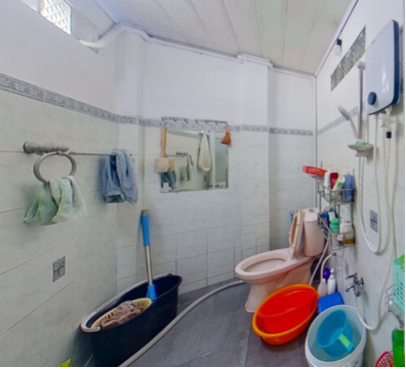
You can also see a large wash-tub and a large bucket of water for washing and cleaning.
Source: Intage Intage Consumer Database, Consumer Life Panorama
Shower curtains are rarely used as partitions, usually made of glass, because of the high humidity and the tendency to get moldy.
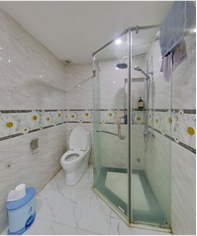
Source: Intage Intage Consumer Database, Consumer Life Panorama
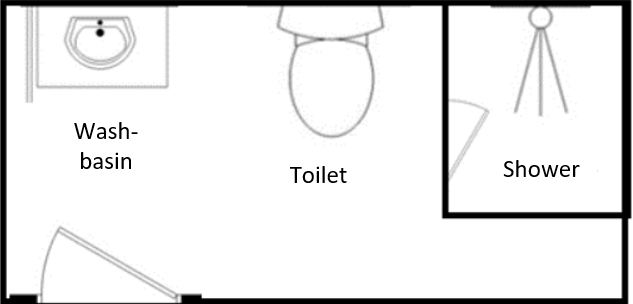
The new layout places the shower stalls at the far end of the room to keep the floor of the toilet and vanity area dry.
Since renovation of the water area is a fairly large undertaking, it is not necessarily the case that the bathrooms in wealthy households have new layouts because they are wealthy, and many households continue to use conventional bathrooms. Therefore, the layout of the bathroom depends on whether the house is old or new, and whether it was renovated when it was sold or otherwise, rather than on income level.
Features of toilet bowls in Vietnam
In Vietnam, the toilet bowl itself is almost the same as the Western-style type used in Japan. While many houses in Japan are equipped with warm-water toilet seats, most toilets in Vietnam are equipped with a “manual water shower”. As a result, many families do not have the habit of keeping toilet paper in the bathroom, and even if they do, they often do not have a toilet paper folder, so they put it randomly on a shelf or put it in a plastic bag and hang it on a hook.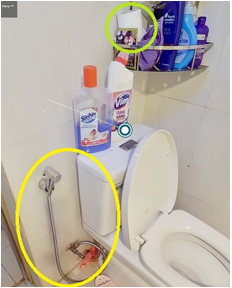
Source: Intage Intage Consumer Database, Consumer Life Panorama
Differences in bathroom facilities between North and South
While Ho Chi Minh City in the south has a tropical climate all year round, Hanoi has four seasons and winters can be quite cold. This difference in climate is reflected in the facilities in the bathrooms.Looking at the installation rate of water heaters in bathrooms, 84.0% of households in Hanoi have water heaters, compared to 39.9% in Ho Chi Minh City (results of the 2019 Population and Housing Census, General Statistics Office, Vietnam). In addition, as it gets quite cold in the bathroom in winter, the trend is to install light bathroom heaters, especially for families with newborns.
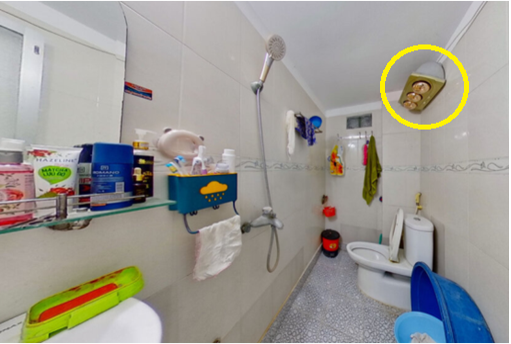
Source: Intage Intage Consumer Database, Consumer Life Panorama
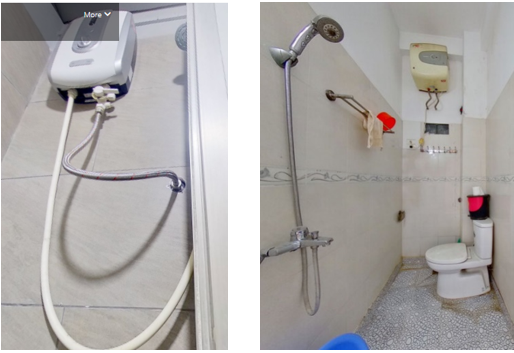
An example of an instantaneous water heater (left) and a water heater (right).
Source: Intage Intage Consumer Database, Consumer Life Panorama
Due to the high cost of electricity for instant water heaters, hot water suppliers are often used in areas where the water temperature drops in winter, such as in the north. In the south, on the other hand, many households choose to use instant water heaters because the temperature of the tap water is higher, so the electricity costs are not as high, and they do not take up as much space.
In some cases, such as hotels, where large amounts of hot water are used, solar hot water systems have been installed, but there are few examples of households using them because of the high cost of installation and the fact that hot water may not be available in cold weather when when warm water is needed.
Future trend - multiple bathrooms per family will become the standard
In Vietnam, it was originally the norm to have one bathroom per house, but it has become more common in urban areas to build four or five story houses on a small plot of land, with a bathroom on each floor for convenience. It has also become standard in condominiums for the wealthy to have an en-suite bathroom in the master bedroom.Furthermore, a current trend in the Vietnamese condominium market is the “dual-key condominium” property. This is a type of condominium with two internal doors, each with a different key, which can be used by two families or one can be rented out. In this case, there are always two or more bathrooms to be installed. Demand for bathroom facilities in Vietnam is expected to continue to grow, as multiple bathrooms become the norm in many homes.
And the ‘partitioned bathroom’ is, in a way, a key element in changing the Vietnamese bathroom market. The creation of shower booths may also increase interest in equipment such as massaging shower panels that can spray from the side. No wet floor means that the bathroom can be used for more than just installing a heated toilet seat, but also for new ways of using it such as using a hairdryer or applying make-up. Moreover, we can expect to see a shift from stainless steel shelves, which used to be concerned about water, to well designed and functional interiors. The time spent in the bathroom by Vietnamese people may become longer and longer in the future.
Introduction of Consumer Life Panorama
Consumer Life Panorama is a web-based database from Intage that allows you to see the real living conditions of consumers in Japan and overseas. You can view 360-degree images of the living environments of consumers in various countries, and see their daily routines, flow lines, and digital lives.Some of the photos in this article are taken from the database. This service can be used when you want to observe the living environment of overseas consumers at hand, without the need for customized surveys.
The Consumer Life Panorama demo site can be found here
For an overview of Consumer Life Panorama here
-
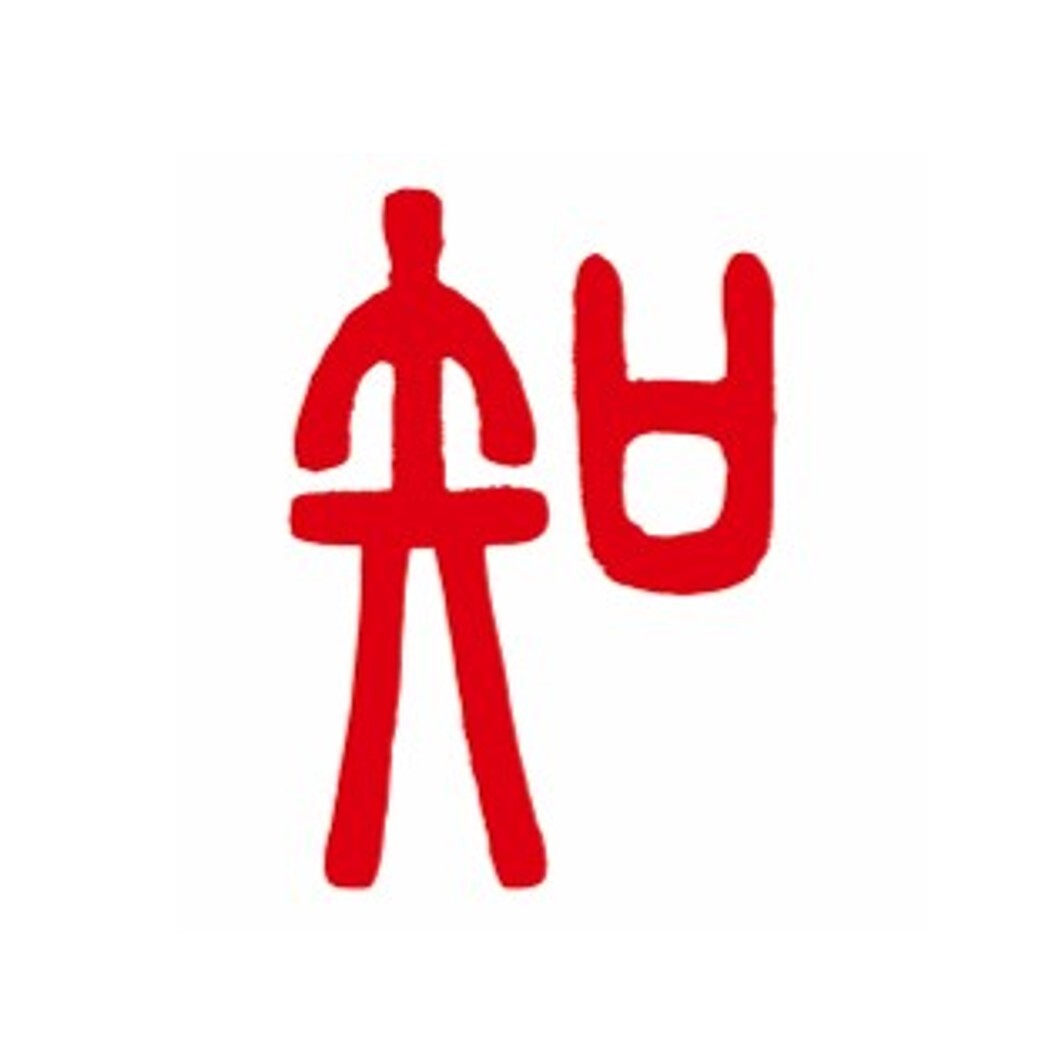
Author profile
Masami Negishi
INTAGE VN Managing Director. After working for INTAGE Japan in charge of overseas research, he was engaged in supporting INTAGE INDIA. After that, he was transferred to INTAGE VN, where he has been since November 2015. He has given many lectures and conference papers. MBA degree. For more information on the report, search "VIEVIEW" on the web service slideShare.Click here for more columns by Vietnamese expatriates
-

Editor profile
Fong-Tat CHEW
 Global Market Surfer
Global Market Surfer CLP
CLP